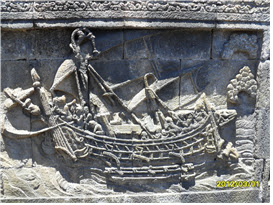When I first heard there was ‘Korean Language School of Yogyakarta’, I felt a bit curious but really great about it. Because I knew Yogyakarta was still strange to Koreans and the number of Koreans living in this region was just around 100. That’s why I was wondering what kinds of instructors and how many students the school would have, which curricula the school would provide, and how classrooms would look like. My curiosity was satisfied easily, because I and my wife were proposed to teach history and Korean respectively by Ms. Kim, Eun-Suk who helped us adapt to new environment in Yogyakarta.
The Korean Language School of Yogyakarta was established in 2008 by Korean Community Church in Yogyakarta under the motto of patriotism ․ love ․ voluntary services. As of April 2012, 9 instructors, centered on the principal, Ms. Kim, Eun-Suk, have taught 30 Koreans and 7 foreign students. The school has 8 classes including Sassak (bud in English), Sarang (love), Haennim (sun), Ggonnim (flowers), Yeolmae (Fruit), and Huimang (hope), and it has curricula of Korean Language, essay, music, math, history, art, and physical education. The school also provides education for traditional Korean culture such as playing traditional Korean instrument.
<Study with preschoolers and 1st graders in elementary school>
The Korean Language School of Yogyakarta is not just a place for Hangul (Korean alphabet) education. It plays a role in exchanging brotherhood to build up faith and affection, and passing down culture of Korea for the next generation. In particular, this school also takes a role of people-to-people diplomatic activities by introducing Korean culture to local residents.
<Students learning traditional Korean instrument>
This school has been operated based on help and support from the Korean Community Church in Yogyakarta, the Korean Indonesian Association of Yogyakarta, and the Korean Embassy in Indonesia. Ms. Kim, Eun-Suk, the principal of the school, said ‘I will make this school beloved by and satisfy attention from Koreans and local residents by putting our effort’.
Even though some students are not good at Korean and some are not familiar with Korean culture, it is great to feel newness such as healthiness, pureness and beauty from students in the school.
<Students and instructors in the Korean Language School of Yogyakarta, Ms. Kim, Eun-Suk, the principal at the lower right corner>
I was really happy to come to meet ‘Korea’ in the Korean Language School of Yogyakarta. Hopefully, this school can be developed, and dreams and desire of students can be achieved.
From the Center for Korean Studies of UGM, Yogyakarta, Indonesia















